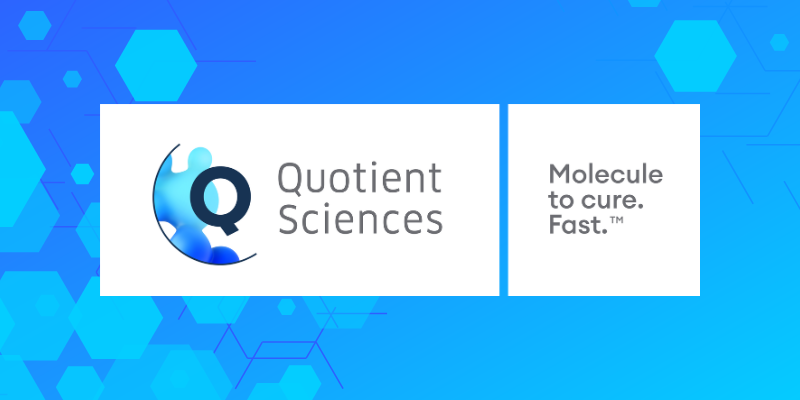Just announced! Register for our next webinar to hear more about the developments in this exciting space and for more insight, be sure to sign up for email news and updates from Quotient Sciences.
The surge in demand for GLP-1 agonist therapies will boost the biotech sector, driving innovation and growth in the years to come. In the United States alone, it is projected that the number of GLP-1 users will hit 30 million by 2030, or approximately 9% of the U.S. population. 1
This rise in demand reflects the growing global challenge of managing chronic metabolic conditions such as diabetes and obesity. The Centers for Disease Control and Prevention (CDC) estimates that the prevalence of obesity in the U.S. has grown from 30.5% in 1999–2000 to 41.9% in 2017–20202. On a global scale, obesity has more than tripled since 1975.3
The need for more effective treatments that improve patient outcomes and adherence is growing. Ten GLP-1 agonist drugs, including semaglutide (RYBELSUS®, Ozempic® and Wegovy®) and tirzepatide (Mounjaro® and Zepbound®) have already received FDA approval for managing Type 2 diabetes and weight loss. In an increasingly competitive space, companies are looking for alternative and more patient-friendly methods to administer these therapies other than by subcutaneous (SC) injection.
In this blog, we explore the growth of GLP-1 agonists, what they are, how they work and their benefits, and how Quotient Sciences are helping companies tackle challenges in the development of these therapies, including oral formulations.
What are GLP-1 agonists and how do they work?
GLP-1 (glucagon-like peptide-1) and GIP (gastric inhibitory peptide) are key incretin hormones involved in regulating glucose metabolism. Both are produced in the gastrointestinal tract in response to food intake, specifically glucose and fats. When a person consumes food, GLP-1 is released from the intestines into the bloodstream, where it performs several key functions. It signals the pancreas to produce insulin, which helps lower blood sugar levels, and simultaneously tells the liver to reduce glucagon secretion, a hormone that typically raises blood sugar levels. The incretin analogues mimic the action of the naturally occurring hormones, but have been designed to be more potent and longer circulating.
Another function of GLP-1 is its ability to slow gastric emptying. By delaying the passage of food from the stomach to the small intestine, GLP-1 ensures that glucose is released into the bloodstream more gradually, preventing sharp spikes in blood sugar levels. It is also known that GLP-1 has a direct effect on reducing appetite via receptors in the brain.
Why are GLP-1 agonists beneficial and what conditions do GLP-1 agonists treat?
In recent years, much attention has been placed on the use of GLP-1 agonists as a treatment for obesity. Research indicates that newer generations of GLP-1 agonists can achieve an average weight loss of 15–25%, significantly surpassing the efficacy of earlier treatments.4 As research in this area continues, the industry is seeing that GLP-1s can offer significant benefits for patients, beyond blood sugar control and weight loss.
For example, large-scale cardiovascular outcome trials (CVOTs) have demonstrated that GLP-1 receptor agonists (GLP-1RAs) can significantly reduce the incidence of major adverse cardiovascular events, including heart attacks and strokes.5 These drugs have also shown recent potential in protecting kidney function, as evidenced by their ability to reduce albuminuria and slow the decline of the estimated glomerular filtration rate (eGFR), a critical indicator of kidney health.6 Despite their benefits, like all drugs, GLP-1 agonists are not without side effects, such as nausea and vomiting, which tend to subside over time.
Are oral solid dose formulations the future of GLP-1 therapies?
Typically, most approved peptide-based medicines are administered via injection, which may be a drawback for some patients. Maximizing systemic absorption and achieving therapeutic drug levels of a peptide following oral administration is a challenge for drug developers due to degradation in the digestive tract and low, and often variable, absorption. Addressing these problems is crucial as research progresses from preclinical to clinical stages.
Following decades of research in both academia and industry, innovations in peptide chemistry and drug delivery are enabling more peptides to be optimized for oral administration, making it easier for patients to start and continue their treatment. In addition a number of small molecular weight compounds targeting the GLP-1 receptor are in development and the availability of oral alternatives is likely to significantly change the therapeutic landscape.
As the scope of GLP-1 agonists continues to expand, their therapeutic potential is evident, opening new avenues for pharma and biotech companies and their outsourcing partners to explore. In clinical trials, the effects of combining GLP-1 agonists with other compounds to act synergistically is being investigated, presenting an exciting opportunity for innovation, enhanced efficacy, and broadened therapeutic applications.
At Quotient Sciences, we can help make this process smoother with our integrated clinical pharmacology programs. From early drug development to Phase I trials, we provide the insights and support you need to make critical decisions faster and more effectively. Our formulation development and oral drug delivery expertise including extensive oral peptide experience can help your company harness the full potential of your molecule.
Learn more about our capabilities
- Explore capabilities in oral peptides
- Explore capabilities in modified release
- Explore capabilities in formulation development
Sources
https://www.jpmorgan.com/insights/global-research/current-events/obesity-drugs
https://www.ncbi.nlm.nih.gov/books/NBK551568/
https://www.mayoclinic.org/diseases-conditions/type-2-diabetes/expert-answers/byetta/faq-20057955#:~:text=Doctors%20do%20know%20that%20GLP,longer%2C%20so%20you%20eat%20less.
https://www.health.harvard.edu/staying-healthy/glp-1-diabetes-and-weight-loss-drug-side-effects-ozempic-face-and-more
Ozempic®, Wegovy®, and RYBELSUS® are registered trademarks of Novo Nordisk A/S.
Mounjaro® and Zepbound® are registered trademarks of Eli Lilly and Company.

